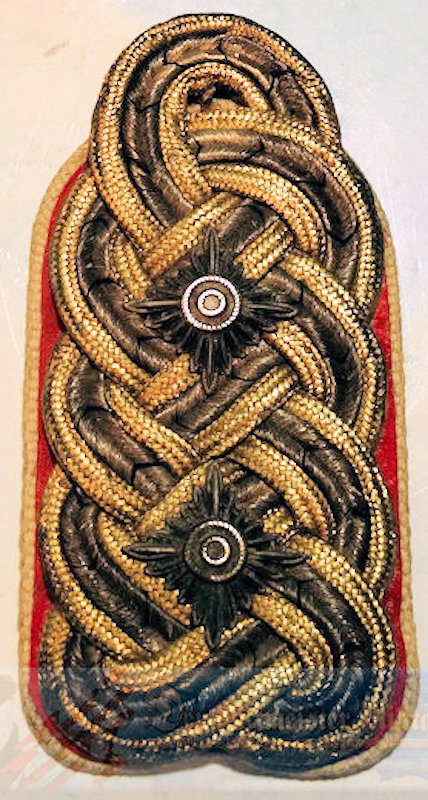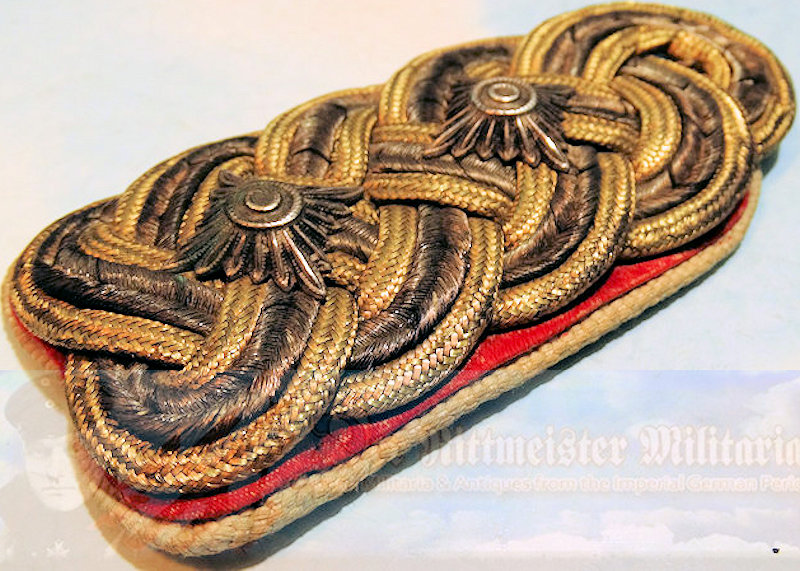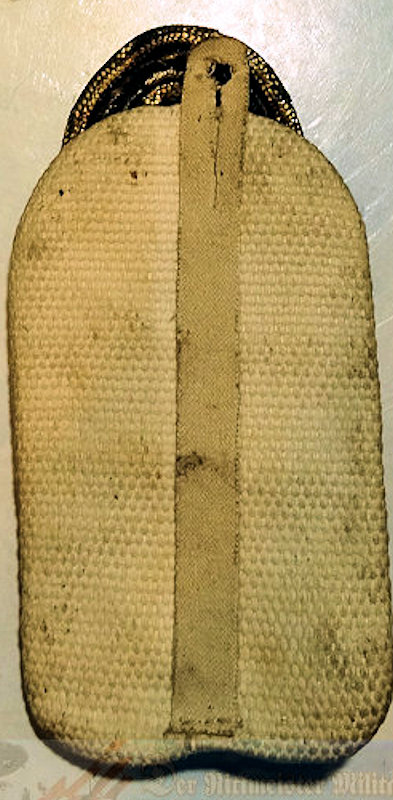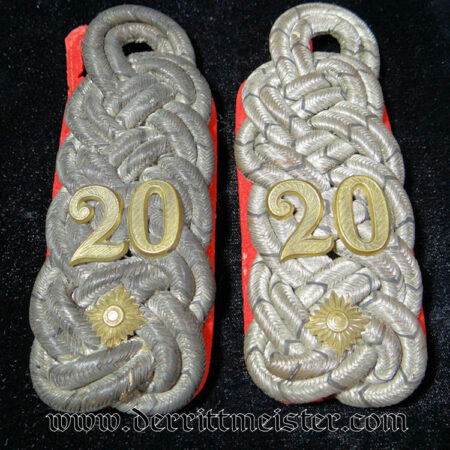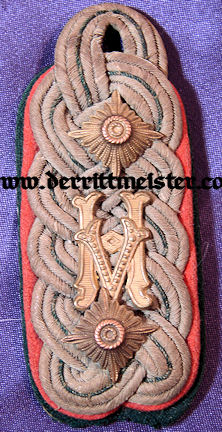Description
Germany’s royal houses often sported more than one “line” of succession. This was true for the House of Hohenzollern, which was split into two lines. The greater line contained Prussia’s ruling family, including Prussia’s Kings and, later, Imperial Germany’s Kaisers. The lesser line ruled the principality of Hohenzollern-Sigmaringen. Fürst Wilhelm (1864-1927) was Fürst Leopold’s elder son, who assumed the title and served as head of that Hohenzollern family branch upon Leopold’s 1905 death. Fürst Wilhelm did not hold any military command, but DID serve as a General der Infanterie à la Suite of Prussia’s 2. Garde-Regiment zu Fuß. The regiment was founded in 1813 and headquartered in Berlin. Like all Garde-Regiments it was attached to the Gardekorps.
This single shoulder board once belonged to Fürst Wilhelm of Hohenzollern-Sigmaringen. It measures 2 ¼” x 4 .” It features two Russian-style gold bullion ropes, with a single band of silver bullion in between them. The silver bullion features the black chevrons that identify the boards as Prussian. The shoulder board’s center features two silver-toned pips, which indicate a General der Infanterie à la Suite. [Gold pips would have indicated a true command General at the Armeekorps level]. The board’s reverse displays a double underlay, a small red trim band and a larger white band. [The latter band ties the shoulder board to the 2. Garde-Regiment zu Fuß]. The white underlay is also interesting in that it is not made of the more commonly-seen felt. It is made of cotton twill. A white strap also is attached that permitted the shoulder board to be slipped onto a tunic.
It is a truly fine example of a shoulder board belonging to a member of German royalty.
